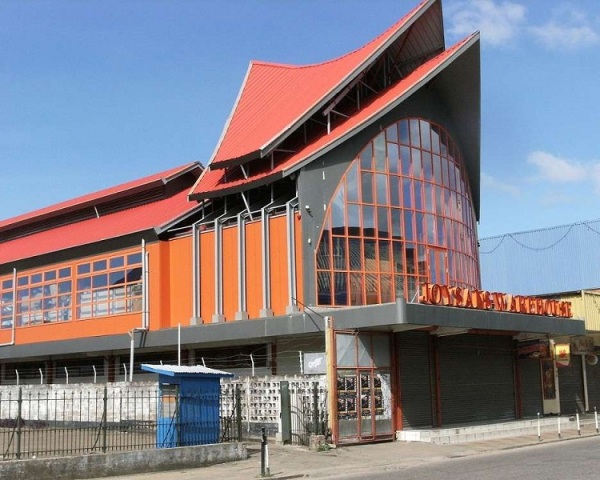Suriname is a country situated in South America, along the Suriname River. Read further and get to know some fun and interesting facts about Suriname.
Facts About Suriname
Suriname, formerly known as Nederlands Guyana, Netherlands Guiana or Dutch Guiana, is a country in South America. It is situated along the Suriname River, between French Guiana to the east and Guyana to the west. The capital of the country is Paramaribo, which also happens to be the largest historic city in the country. It would interest you to know, that there a large number of ethnic groups namely, Dutch, French, Bhojpuri, Sarnami and Javanese. The country shares its southern border with Brazil, while the northern one is shared with the Atlantic coast. The southernmost border that it shares with French Guiana is disputed. The country was first colonized by the British and later, captured by the Dutch in 1667. One of the smallest sovereign countries in South America, Suriname is largely a Dutch colony and is home to a large variety of mountains, forests and reserves. With majority of its landscape covered by rainforest, Suriname boasts of a great diversity in flora and fauna. In the following lines, we have provided some more fun and interesting information on Suriname.

Image: By Mark Ahsmann (Own work) [GFDL (http://www.gnu.org/copyleft/fdl.html) or CC-BY-SA-3.0-2.5-2.0-1.0 (http://creativecommons.org/licenses/by-sa/3.0)], via Wikimedia Commons
Fast Facts
Continent: South America
Area: 163,821 km2
Capital: Paramaribo
Population: 560,157 (2012 estimate)
Population: 560,157 (2012 estimate)
Currency: Surinamese Dollar
Official Languages: Dutch, Sranan Tongo, Surinamese Hindi/Sarnami and Ameri-Indian languages.
Independence Day: November 25, 1975
Calling Code: 597
Type Of Government: Constitutional Democracy
Fun & Interesting Facts About Suriname
- The official name of Suriname is ‘Republic of Suriname’.
- The current President in Suriname is Desi Bouterse, who was elected to his position on July 19th, 2010. He is the 9th President of the Republic.
- Suriname was formerly known as Dutch Guiana.
- The official language of Suriname is Dutch. Apart from that, English, Sranan Tongo, Hindustani, Chinese, French, Spanish and Javanese are also widely spoken there.
- Majority of the people in Suriname are Roman Catholics, followed by Hindus, Protestants and Muslims.
- The main ethnic groups in Suriname are Hindustani, Creole, Indonesian, Maroon, Native American, Chinese and European.
- The currency of Suriname is Surinamese Dollar.
- The economy of this country largely depends on export earnings and primary industry. Bananas, rice and shrimp fuel the economy with main exports to the United States of America, Canada, Netherlands and other, neighboring Caribbean countries.
- The Bauxite industry is one of the main industries in the country, which earns Suriname an estimated average of 4.8 billion dollars per annum.
- The capital of Suriname is Paramaribo.
- Suriname follows the system of ‘Constitutional Democracy’.
- The Jules Wijdenbosch Bridge is one of the greatest landmarks in the country. This bridge is constructed over River Suriname and was completed in the millennium year. Another important highlight in the city, is the Cathedral of St. Peter and Paul, which is over a century old.
- Suriname achieved independence from the Kingdom of the Netherlands on 25th November 1975.
- Paramaribo, Lelydorp and Nieuw Nickerie are the largest cities in Suriname.
- Juliana Top (1,230 m) forms the highest point in Suriname.
- Tropical rainforest make up around 80 percent of the landscape of Suriname.
- Suriname has two World Heritage Sites: the Central Suriname Nature Reserve and Historic Inner City of Paramaribo.
- Arawak and Carib people were amongst the earliest inhabitants of Suriname.
- Suriname was discovered by Christopher Columbus in 1498, when he was still in the service of Spain.
- Spanish claimed Suriname in 1593, while the first half of 17th century saw British colonists settling in.
- British colony in Suriname was exchanged for Dutch possession of New Amsterdam (now New York), in 1667.
- Slavery was abolished in Suriname in 1863. Thereafter, indentured labor was taken from China, India, and Indonesia, to replace slave labor.
- Aluminum Company of America started mining operations in Suriname in the year 1916.
- Suriname is the smallest sovereign state in South America, in terms of area and population.
- Bauxite and gold mining, alumina production, oil, lumbering and food processing are the main industries in Suriname.
- Suriname is one of the few countries in the world, where you will find a mosque situated next to a synagogue in the center of the country’s capital.
See also
More from iloveindia.com
- Home Remedies | Ayurveda | Vastu | Yoga | Feng Shui | Tattoos | Fitness | Garden | Nutrition | Parenting | Bikes | Cars | Baby Care | Indian Weddings | Festivals | Party ideas | Horoscope 2015 | Pets | Finance | Figures of Speech | Hotels in India : Delhi | Hyderabad | Chennai | Mumbai | Kolkata | Bangalore | Ahmedabad | Jaipur
- Contact Us Careers Disclaimer Privacy Policy Advertise With Us Lifestyle Sitemap Copyright iloveindia.com. All Rights Reserved.







